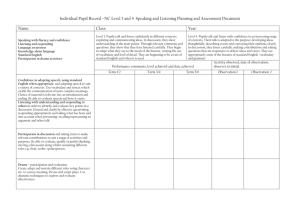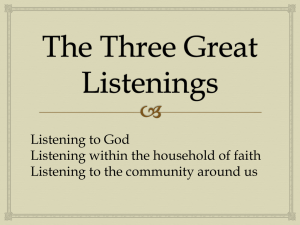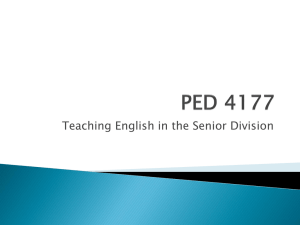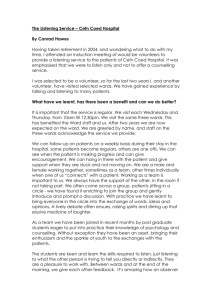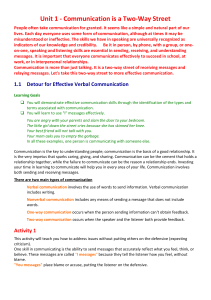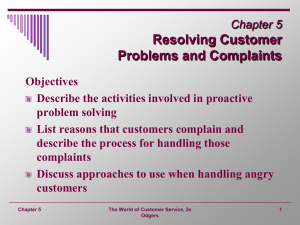Chapter 5- Listening and Responding Skills
advertisement
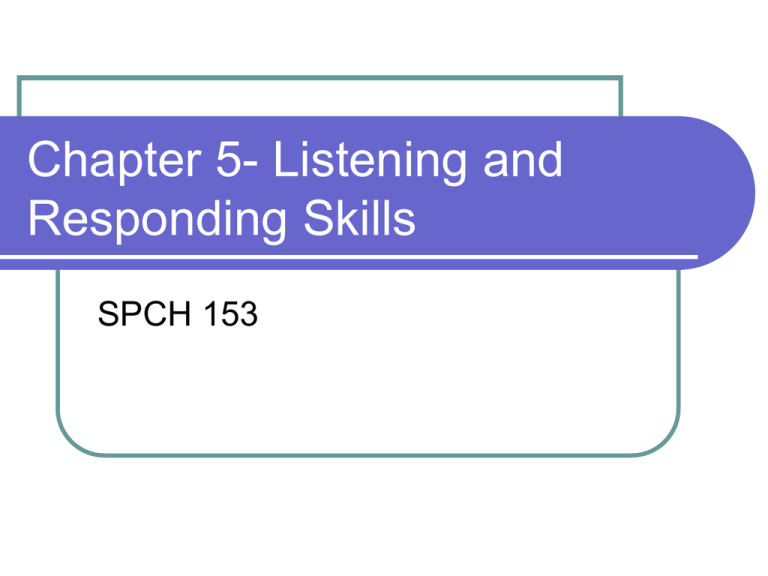
Chapter 5- Listening and Responding Skills SPCH 153 Hearing vs. Listening Hearing= Physiological process of just decoding sounds Listening= Complex process of selecting, attending to, creating meaning from, remembering, and responding to verbal and nonverbal messages. Five Elements of Listening Process Selecting Attending Understanding Remembering Responding Listening Styles Listening Style- Preferred way of making sense out of spoken messages Four Styles: People Oriented Action Oriented Content Oriented Time Oriented Not mutually exclusive. Listening Barriers Being self-absorbed Information overload Unchecked emotions External noise Criticizing the speaker Listener apprehension Different Speech rate and thought rate Improving as a listener Stop Look Listen Determine listening goal Transform barriers into goals Summarize details of the message Weave summaries together into a major point Listen to challenging material Empathic Listening Skills Socially decenter- imagine what others are thinking Think how you would react Reflect on what you know about the other Think about how you think most would react Imagine how the partner is feeling Critical listening skills Critical listening- evaluate the quality, appropriateness, value, or importance of information Assess information quality Avoid jumping to conclusions Responding skills Don’t interrupt Ask appropriate questions Accurately paraphrase Provide well-timed responses Provide usable information Avoid unnecessary details Be descriptive rather than evaluative



